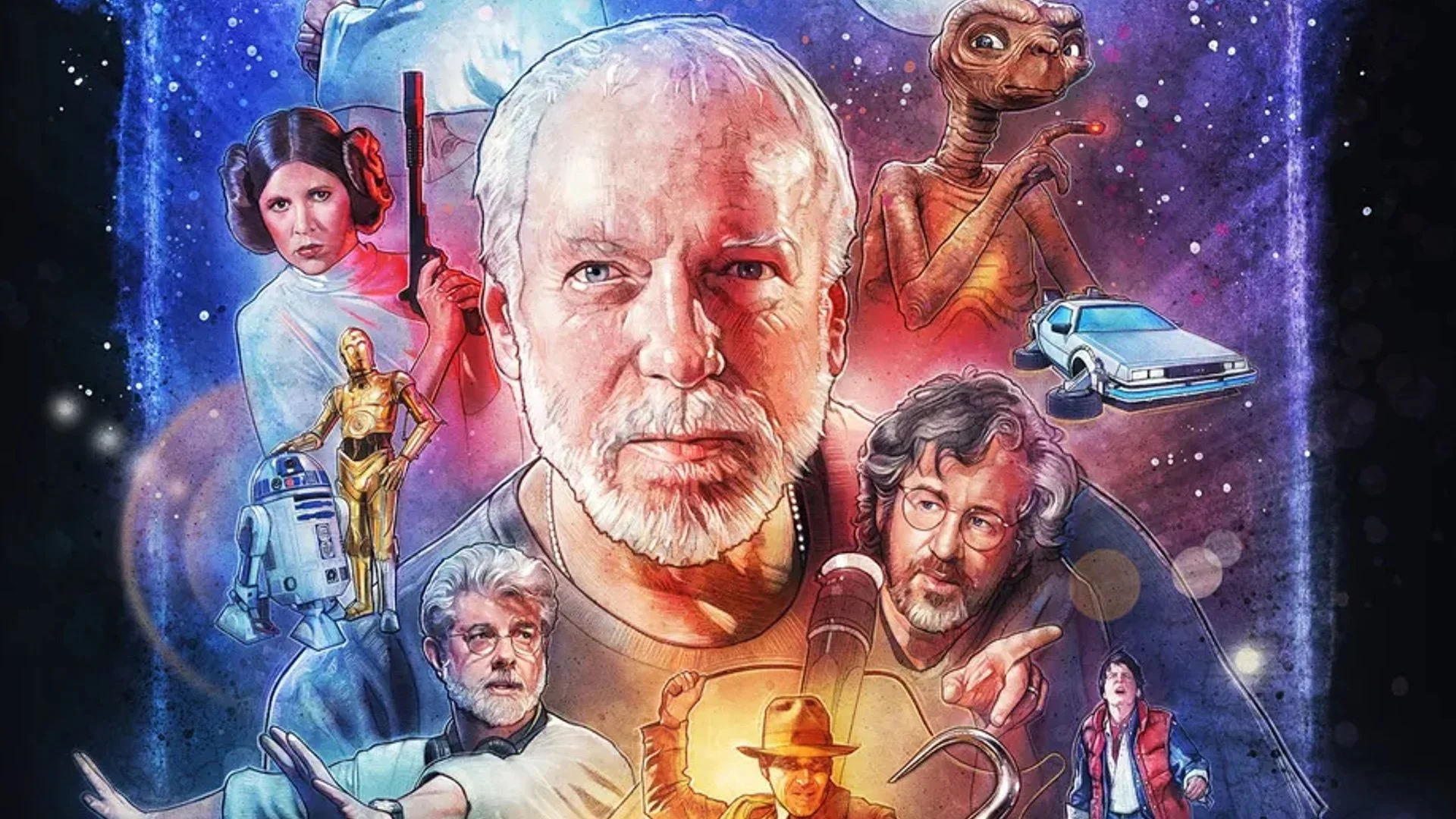Remembering Drew Struzan: The Artist Behind The Greatest Movie Poster Art Ever Made
We lost one of the greats today. Legendary movie poster artist Drew Struzan has passed away at the age of 78. His death was confirmed on his official Instagram account with the message:
“It is with a heavy heart that I must tell you that Drew Struzan has moved on from this world as of yesterday, October 13th. I feel it is important that you all know how many times he expressed to me the joy he felt knowing how much you appreciated his art.” – Greg
That “Greg” is likely Greg Boas, producer of the 2013 documentary Drew: The Man Behind the Poster, which chronicled Struzan’s extraordinary career and featured appearances by Steven Spielberg, George Lucas, and Guillermo del Toro.
These filmmakers, each a filmmaking titan in their own right, spoke with deep admiration for a man whose work helped define the visual identity of their movies and, in many ways, modern cinema itself.
I’ve been a fan of Drew Struzan’s art since I was a kid. His posters weren’t just marketing materials, they were pure movie magic captured on paper. As a teen I started collecting his posters, and he’s one of the main reasons I still continue to collect poster art from various artists today.
Struzan began his professional career in the 1970s, illustrating album covers for bands like The Beach Boys, The Bee Gees, Black Sabbath, and Alice Cooper before transitioning into film posters.
In 1977, he was hired to create a new design for the re-release of Star Wars, which led to his famous “Circus” poster. Speaking about the original creation Drew said, “When we got the billing, we discovered there wasn't enough room for all the credits, so we had to figure out a way to make more space.
“We thought, 'Why don't we take what we already have and paint it to look like its wild posted on top of other posters?' That gave us the extra room we needed for the billing at the bottom. It was a case of Necessity being the Mother of Invention."
From there, his brushstrokes became part of film history. Blade Runner, Indiana Jones, The Goonies, The Thing, E.T.,Back to the Future, his work captured adventure, mystery, and emotion with a warmth and texture no Photoshop could ever replicate. His style became the standard everyone else tried to emulate.
He also left his mark on comic book culture, crafting covers for Action Comics, Daredevil, and Star Wars, further blending the cinematic and illustrated worlds that defined geek culture.
Struzan retired in 2008 after working on Indiana Jones and the Kingdom of the Crystal Skull, though he couldn’t stay away from his craft for long. He came out of retirement a few times creating art for The Dark Tower, Batkid Begins, Star Wars: The Force Awakens, and How to Train Your Dragon.
Even as the industry shifted toward digital art, Struzan’s hand-painted style remained timeless, a reminder of what real artistry looks like.
He also collaborated with his wife, Dylan Struzan, illustrating her 2019 book A Bloody Business. The couple shared a profound creative partnership that lasted decades.
Earlier this year, Dylan shared an update about his health, revealing that Drew had been battling Alzheimer’s disease for several years. Her heartfelt message offered a glimpse into their love and the painful reality of his illness:
“Good morning all. I’m Drew’s wife, Dylan Struzan. I come to you with a heavy heart. Several years ago, Drew was diagnosed with Alzheimer’s Disease... Drew can no longer paint or sign things for you. He is not enjoying a well-deserved retirement but rather fighting for his life.”
She went on to describe his struggle and their enduring bond:
“He hears all the comments you have left here on these pages. It encourages him... Drew has left a strong legacy of love and joy in the form of his work. It has always been a love letter of sorts. His aim was to make the earth a better place in which to live by creating something beautiful. But like a flower, his season is ending.”
Dylan continued, reflecting on Drew’s influence as both an artist and a human being:
“They call this the humanities because it is something unique to our species. Art is meant to be enjoyed. Drew always wanted his work to be uplifting. From your comments, I believe he has succeeded. It was always his mission to move art forward being deeply influenced by the great artist and his professor at Art Center, Lorser Feitelson who introduced him to Modernism... Drew was also influenced by the Impressionists... His drawing skills were informed by the likes of Michelangelo and Pontormo and those in the Italian Renaissance.”
Drew Struzan’s legacy is everywhere. It’s in every nostalgic theater lobby, every collector’s wall, every fan’s heart who fell in love with his art. His posters told stories. They were portraits of imagination, painted by a man who understood the soul of cinema.
For me and countless others, Drew’s work wasn’t just art, it was inspiration. It made us fall in love with film before we even saw a single frame.
Rest in peace, Drew. Your brush gave shape to the dreams of generations, and your art will forever remind us why we love the movies.
The poster art above was created by artist Kyle Lambert.
